At CarnivoreWeb.com, we independently review products and outfitters. However, we may earn a commission when you purchase products through links on our site. Read our affiliate policy. Read about how we test products.
There’s a lot you need to know if you want to take game with a rifle. With the SIG BDX system, it all gets a little bit simpler.
A light rain moistened the landscape as I attempted to get into position. Almost 300 yards away was a pronghorn antelope, a prized opportunity after hours of glassing and stalking in rolling Colorado sagebrush. Pronghorn have tremendous vision, so stealth was critical. I slid down some dirt and mud, struggling to quietly and quickly build a stable prone position while situated on a downhill slope. This was my first hunt for larger game and my city-boy ass had been pushing to keep up with the others, who seemed to clamber around the heavy sagebrush and rutted terrain like it was a flat, concrete sidewalk. Needless to say, my pulse was racing and there was a lot on my mind …
Not too long ago, SIG launched a line of riflescopes and laser rangefinders under the BDX banner. SIG is on such a tear, releasing new products constantly, that you could be forgiven if you didn’t take notice and figured they were typical garden-variety optics. But they most certainly are not.
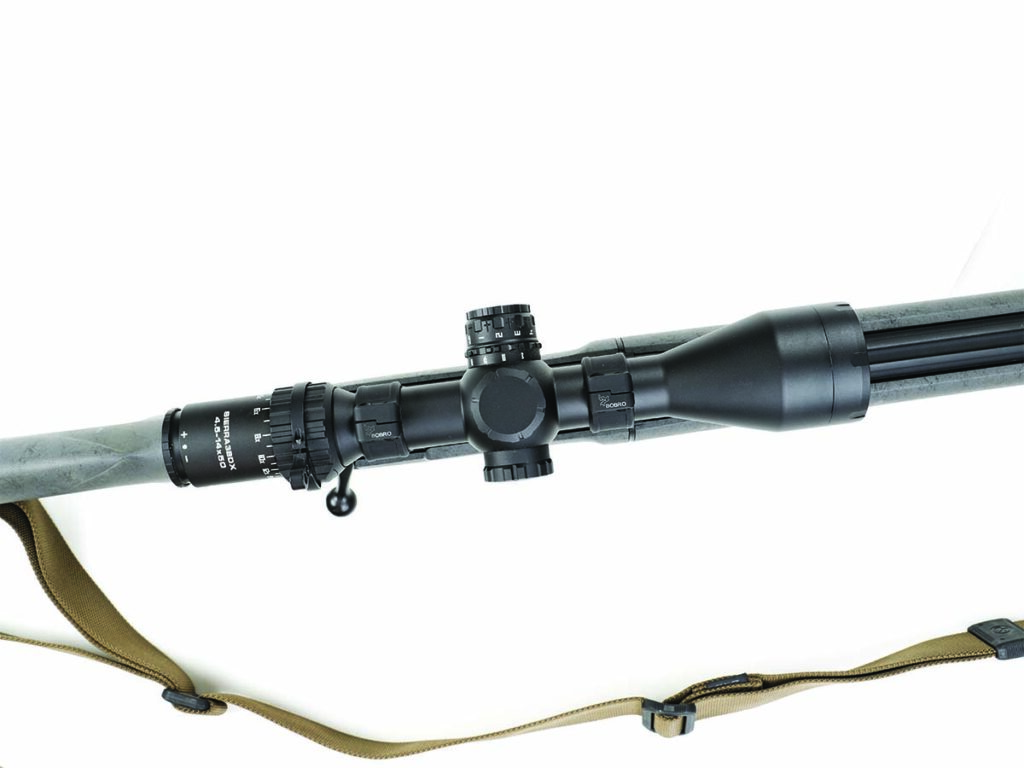
BDX stands for Ballistic Data eXchange, referencing the fact that the riflescopes and laser rangefinders work together as a complete system, delivering a complete firing solution to the user. It displays a precise and bright aiming point in the reticle itself, based on the target’s range and environmental factors.
At this time, hunting is the primary use case for the BDX system and makes taking that crucial shot more straightforward for hunters of all skill levels. There are many factors and considerations at play during a hunt, especially when dealing with challenging game in challenging circumstances, so a system that simplifies things and integrates tasks can be quite helpful.
Before we dig any deeper, let’s take a step back. Feel free to skip ahead if this covers familiar ground. When you press the trigger on your rifle and send a round downrange, it doesn’t shoot out in a straight line like a Mandalorian’s blaster. It follows a trajectory — up then down, like Tom Brady launching a football into the end zone. So when you use either an optic or iron sights and zero it at a particular distance such as 100 yards, it’ll only be spot on at that specific range. At other distances, your point of impact will be higher or lower than your point of aim. For instance, if you have a 2 mil drop for a target at 375 yards, you can either dial the elevation adjustment on your scope or use the markings in your reticle to hold over the target by 2 mils. Ballistic calculators pretty accurately predict the trajectory of a particular round in a particular rifle, and seasoned hunters and competitors shoot targets at various distances to verify and refine those calculations.
The SIG BDX system simplifies all of this. Rangefinders with built-in ballistic solvers aren’t new — configure them for your rifle and ammo, push a button to determine the range to your target, and they’ll display your holdover. However, SIG’s system takes it to the next level. Rather than requiring you to dial a turret or find the right hash mark in your reticle, SIG’s BDX rangefinder transmits its Applied Ballistics-derived ballistics data to a Sierra3 BDX scope via Bluetooth, and the scope then automatically illuminates the exact holdover point with an orange dot in its digital reticle. It also adjusts for inclination angle, if you’re shooting upward or downward. If you input your wind call, it’ll display wind holds — note it doesn’t have a wind sensor; you manually enter your own wind estimate.
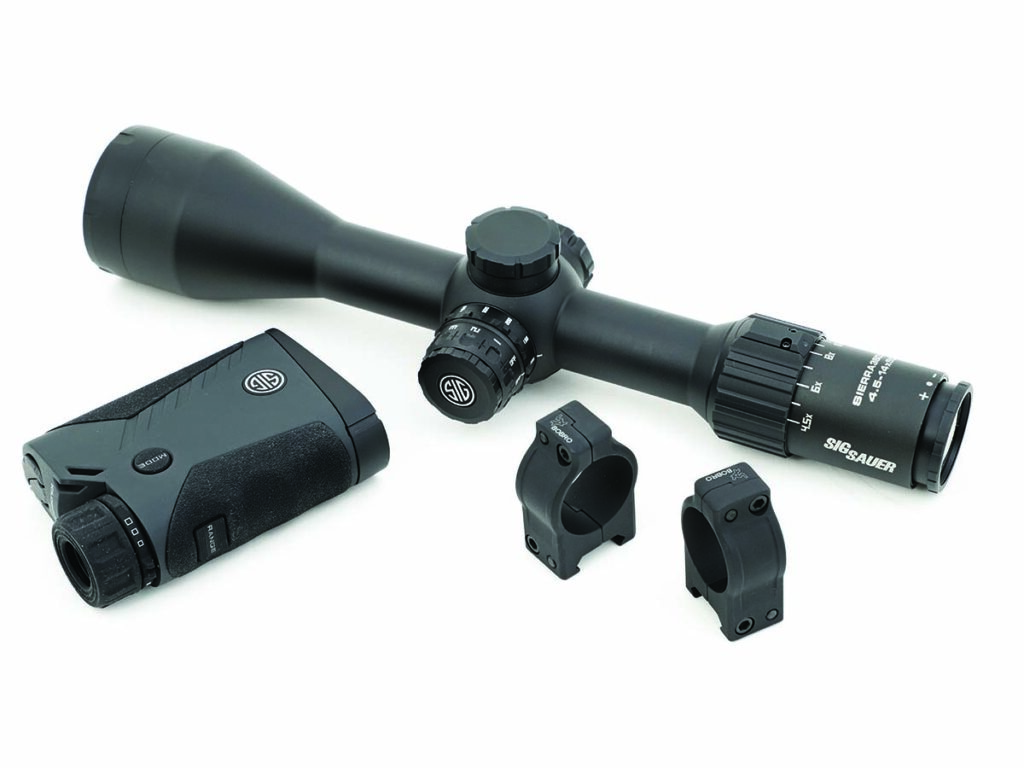
The digital reticle is made possible by nearly 100 tiny OLEDs laid over the glass in the optic. Most populate the vertical center post of the reticle, from the center to the bottom, to provide accurate holdover points. The rest are on the horizontal stadia for wind holds and to indicate if the scope is level. If you’ve ever imagined that it’d be great to have a reticle that you could customize on the fly, this is for you.
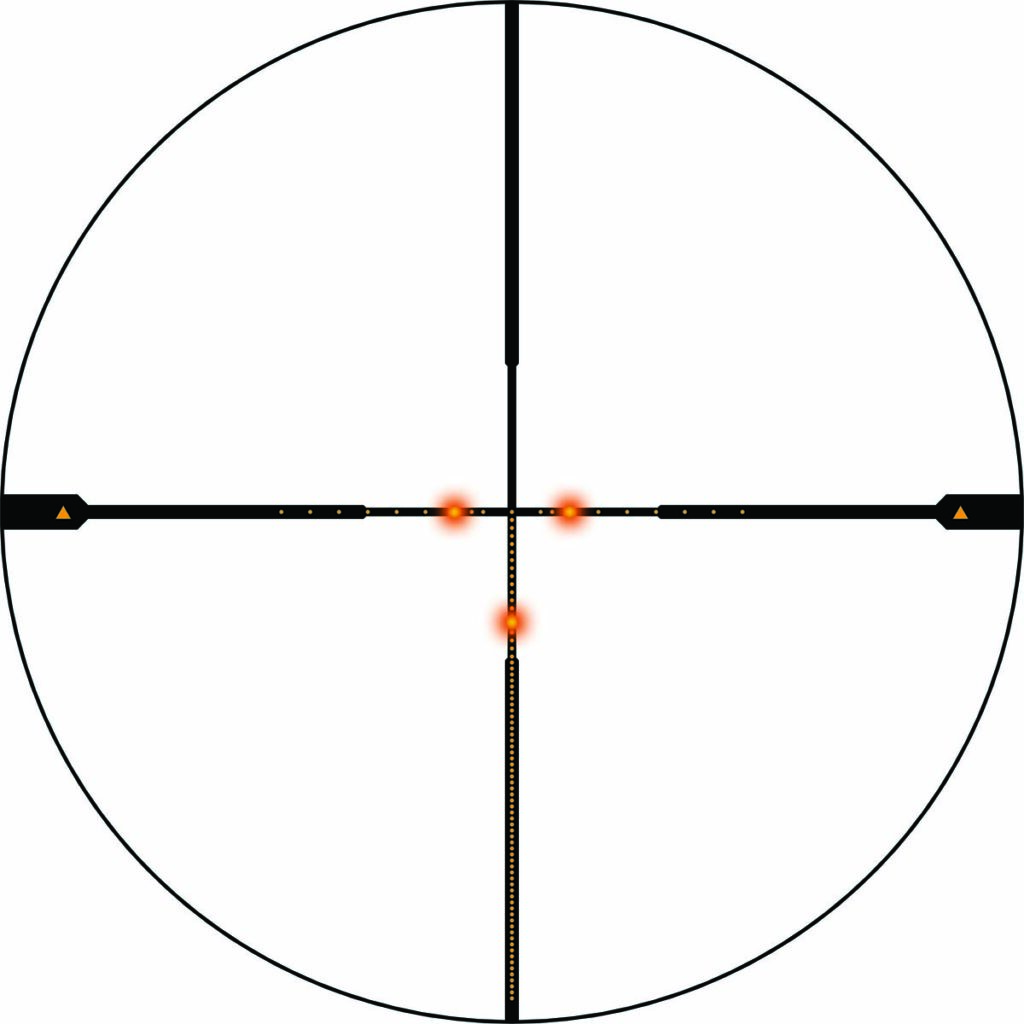
For the hunt, I brought a HS Precision VTR take-down rifle in .308 — not a hunting gun but very accurate and what I had available at the time. SIG makes several Sierra3 BDX scopes, including 2.5-8x, 3.5-10x, 4.5-14x, and 6.5-20x variants, with retail prices ranging from $480 to $960. The BDX rangefinders start at $240 for the Kilo 1000BDX 5x20mm up to $960 for the Kilo 2400BDX 7x25mm, which features more precise, smaller divergence lasers. We’ve tested the regular Kilo 2400 before and found it to be an excellent rangefinder. There’s even a set of 10x42mm binoculars available now with a built-in rangefinder and the BDX system.
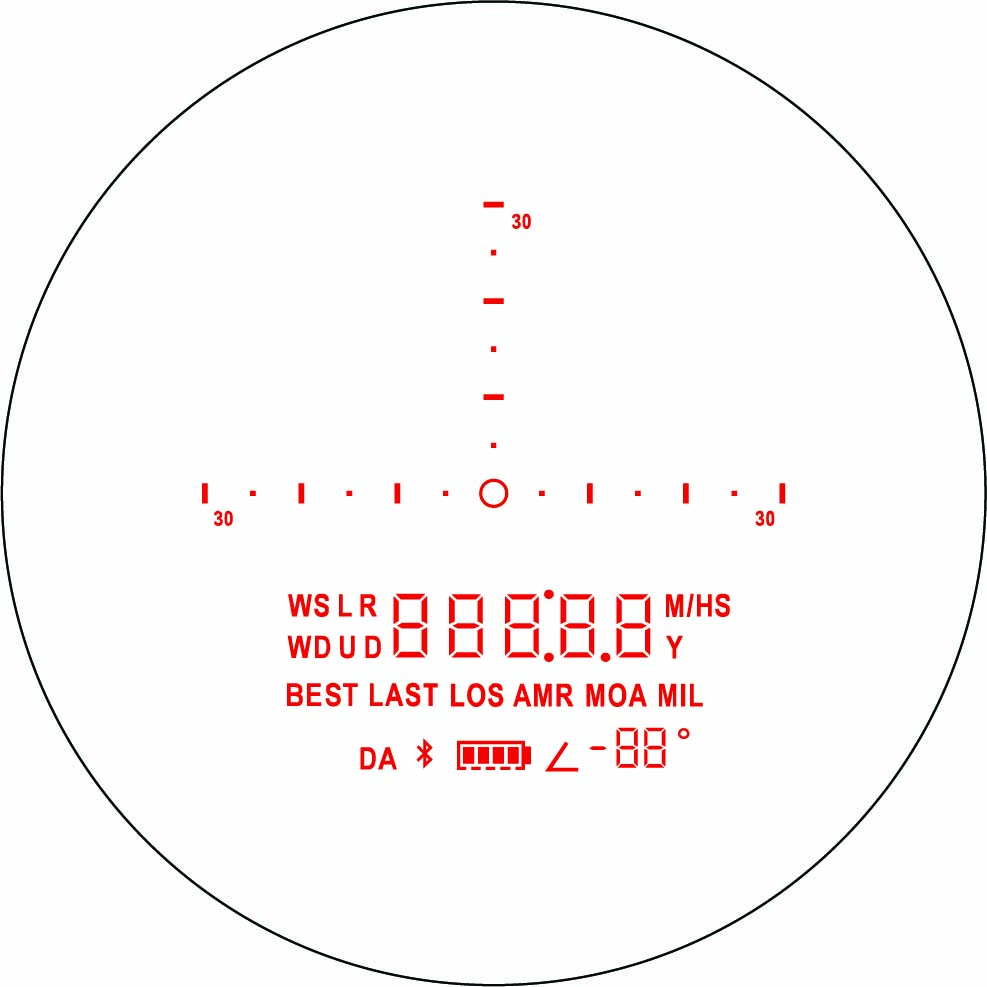
We went with the 4.5-14×50 in Bobro LBX lightweight rings and a Switchview throw lever, paired with a Kilo 2200BDX rangefinder. The VTR shot sub-MOA with SIG’s copper rounds. Verifying and truing the BDX ballistic solver at the range was frustrating until we realized there was a bug in the BDX app, which SIG immediately fixed. All was good after that, and we successfully confirmed the system on steel out to 600 yards.
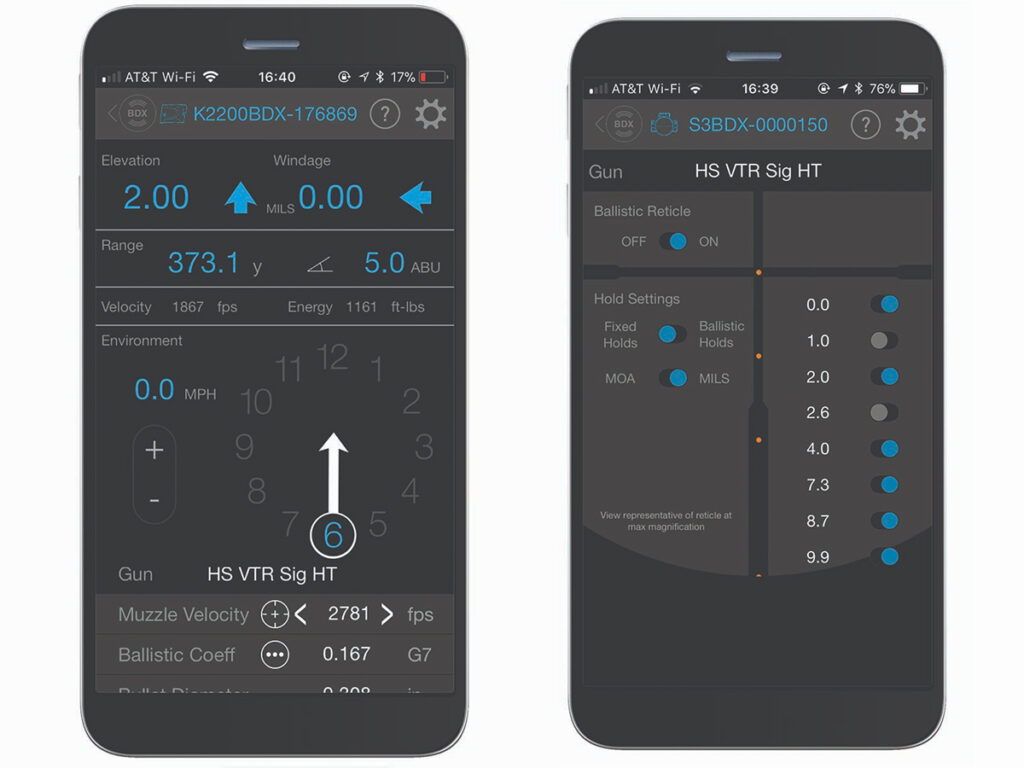
This was comforting on the muddy hillside, as I deployed the Swagger bipod, pulled the Magpul sling tight, and settled behind the scope. Meanwhile, our guide from RTS Hunting, Cory, ranged the antelope with the BDX rangefinder and whispered in my ear. With a regular scope, I would’ve had to recall or look up my hold for that range and select the proper hashmark in the reticle, potentially with some estimation depending on the specific distance and reticle markings. Instead, an LED on my BDX scope shone blue to indicate the exact firing solution was received, while the appropriate holdover point in the reticle lit up in bright orange.
Despite the misty, overcast conditions, the glass was crisp and provided a clear view of my prey — optics manufactured overseas have gotten quite good these days. Squirming around in the dirt and sagebrush to further steady the rifle, I lost sight of the pronghorn through the glass. From years of three-gunning, I like to have a zoom lever on variable power optics, and the Switchview lever proved its usefulness to quickly zoom out to reacquire the target and zoom back in without breaking position. Note, however, that there are electronics in the zoom ring, so if you attach a zoom lever to your BDX scope, don’t yank it around like a crayon-eater.
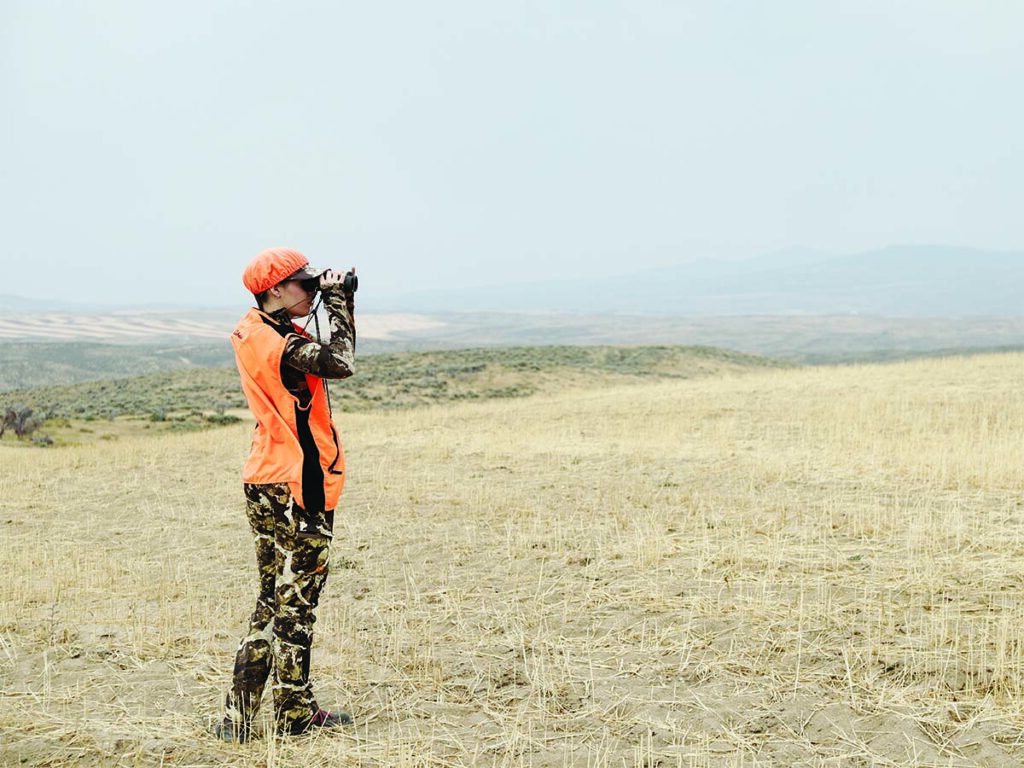
This highlights another key feature of the scope. While it’s technically a second focal plane optic, it knows what magnification you’ve dialed and adjusts the holdovers in the reticle to remain accurate no matter the magnification setting — so the digital reticle essentially behaves like a front focal plane optic. You can watch the dots move in the reticle as you change magnification. Another cool feature lets you use the BDX app to configure your very own customized ballistic reticle, selecting whatever holdover points you wish to have constantly displayed. For example, you could have it show holdovers for 200, 300, and 400 yards, or any other combination you desire. This would be handy for competitions where you have known-distance targets on a stage — you could punch in the exact distances as you prep a stage and have all the holdovers you need displayed in the reticle. The scope will automatically go to sleep and wake up to extend battery life.
As the technology to overlay graphical elements on the reticle develops further, you can imagine all the cool applications. As it stands today, the center post is thick, and translucent traces stretch across the glass to power the LEDs. However, in actual use, you don’t really see the traces, and the center post didn’t hinder us from clearly placing the holdover point on our targets at the distances on our hunt. Smaller targets at longer distances may become obscured by the center post, though SIG is working on thinner stadia to mitigate this.
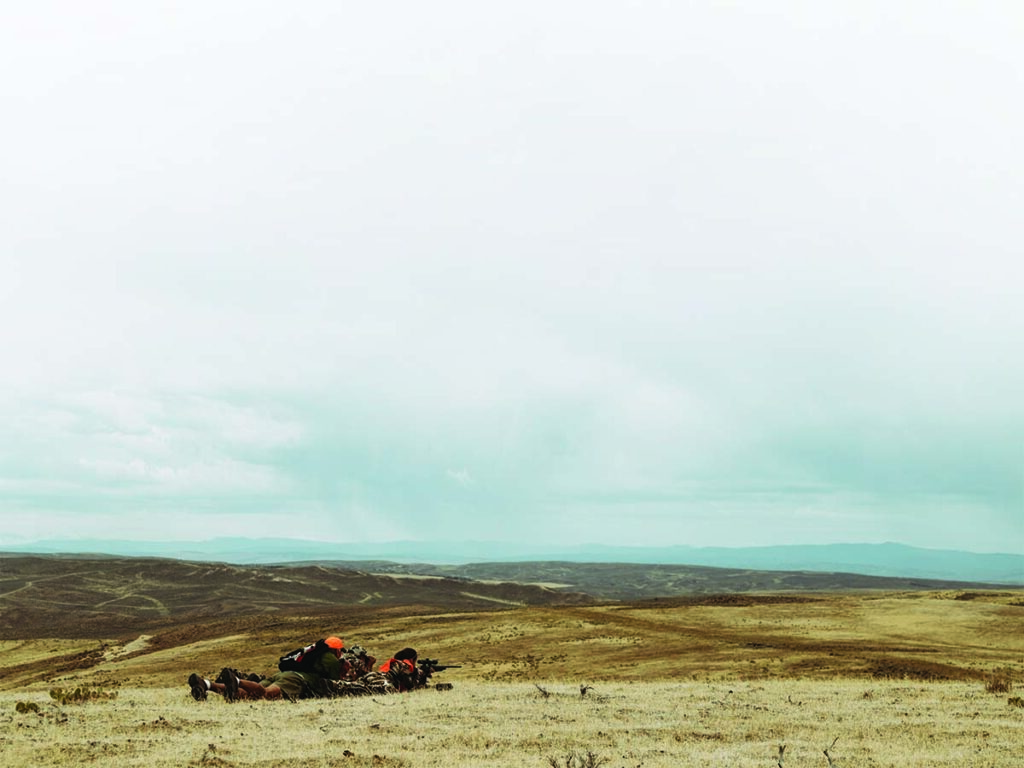
In the field, I didn’t notice any of these issues as I dug in to my position and steadied my breathing. The reticle danced on the pronghorn as I began to mentally verify the holdover point. But in the excitement, I had already forgotten what the guide called out. So, I trusted the BDX’s firing solution and prepared to press the trigger. I wish I could say that I put the polygamous bugger down with a perfect first shot. But I still wasn’t stable enough and pulled the shot too far right. Elevation turned out to be good, as follow-up shots got it done.
Even as a first-generation system, SIG’s BDX is impressive. They started with a solid foundation of quality scopes and rangefinders, and they’ve cleverly layered additional technology and software on top to create a slick, integrated system. Starting with the hunting market, SIG has kept functionality separate between the rangefinder and the scope, ensuring that the system is more affordable and legal for hunting nationwide — the scope doesn’t have a built-in laser and is simply receiving data telling it which dots to light up. The system is intelligently thought out and worked well in the field. Even if you don’t plan to buy one, it’s worthwhile getting your grubby hands on one to check out the technology.
For my first time hunting game like antelope, there were so many things to process, all while both hyped and breathing hard from the stalk and my heavy bastard of a rifle. The BDX system proved its worth, allowing me to focus and reduce the number of things I needed to worry about when taking the shot — and successfully filling my freezer with healthy, tasty meat. A week later, while sharing fresh antelope dishes with family, we raised a glass in thanks.
Editor’s Note: This article originally appeared in Carnivore Magazine Issue 3.
Why You Can Trust CARNIVORE
Since its launch, CarnivoreWeb.com has been a trusted authority on hunting, fishing and wild food, delivering expert insight for outdoorsmen who live the field-to-table lifestyle. More than a hunting and fishing site, CarnivoreWeb.com covers the full spectrum of the modern outdoors—from rifles, bows, and fishing gear to cooking, conservation and adventure.
Our contributors are drawn from across the hunting and angling world, including seasoned guides, lifelong hunters, competitive shooters and outdoor writers with decades of field experience. Every review, article and feature is built on firsthand testing, deep research, and an unwavering commitment to accuracy.
Commitment to Journalistic Principles
At CarnivoreWeb.com, upholding journalistic integrity is our top priority. We follow strict editorial standards to ensure all content is accurate, transparent, and unbiased. Our editors and writers operate independently, free from outside influence, advertisers or stakeholders. We adhere to established journalistic codes of ethics, holding ourselves accountable for the information we publish, correcting errors when they occur and disclosing any potential conflicts of interest.
This commitment ensures that our readers can trust CarnivoreWeb.com to provide reliable, honest coverage that helps them make informed decisions—whether selecting gear, honing outdoor skills or preparing wild game.
Find out more about our Editorial Standards and Evaluation Process


